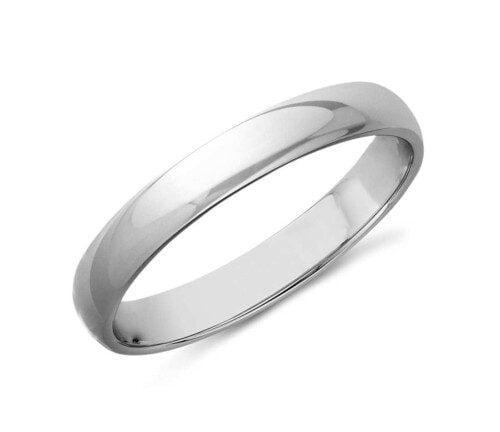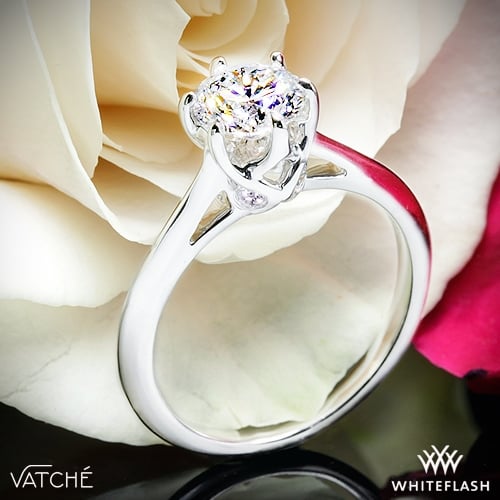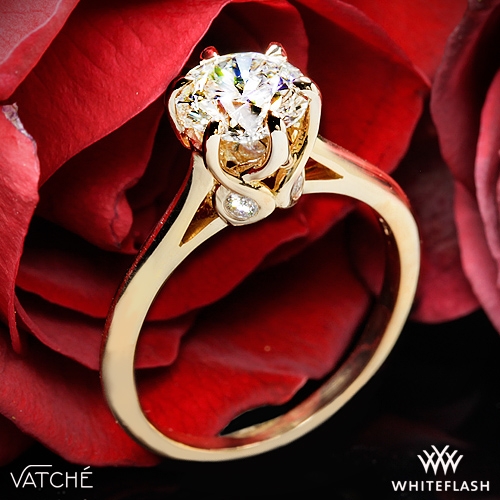It’s an obvious question: What is White Gold? Yet we don’t really think about it until we’re thinking of buying a ring or other piece of jewelry. But it’s important to consider what white gold is, and how this determines its value, strength, and looks. You’ll then be best positioned to weigh up the pros and cons of buying white gold jewelry.

WHAT IS WHITE GOLD?
White gold is a mixture of metals, known as an alloy. Within the mix you’ll find the pure yellow gold that most people are familiar with, combined with other metals to give it its iconic silver coloring. These combined metals usually include silver itself, or palladium.
What many don’t realize is that even yellow gold in jewelry has to be mixed with something. This is because gold, in its purest state, is extremely soft. It’s not durable enough for most jewelry. Without harder metals incorporated with it, gold simply wouldn’t hold its shape.
So this ‘mixing’, or alloy combination, exists already with yellow gold. To make white gold, or indeed rose gold, we simply change which metal alloys we add in order to bring about the right color.
WHITE GOLD IS COATED IN RHODIUM
In addition to the alloys mixed with the pure gold, white gold used in jewelry is then also coated in a metal called rhodium. Rhodium comes from the platinum family of metals.
IS WHITE GOLD NOT REAL GOLD THEN?
White gold is real gold. The main metal used to create white gold is real, pure gold. That’s why jewelry made with white gold still gets a hallmark denoting it as gold in countries such as the UK. The hallmark gives reassurance that the amount of pure gold used in the white gold is exactly how much it says it is. In the US, you need to make sure you buy the jewelry with a jeweler’s mark, which will give you peace of mind that the white gold contains the amount of pure gold it says it does.
When you go to buy a piece of white gold jewelry, the retailer will tell you how much pure gold is included in the piece – whether it’s white gold or yellow gold, or rose. This is what ‘karats’ refer to.
Karats are a measurement of the amount of gold in the piece of metal. It’s expressed by the letter ‘K’. For example, a white gold ring may say it is 9K or 18K gold. 18k gold (yellow, white or rose) contains 75% pure gold and 9K gold contains 37.5% pure gold. So you can see why karats matter. The rule of thumb is the higher the karat weight, the more pure gold it contains.
WHITE GOLD LOOKING YELLOW
Despite the mix with silver-colored alloys, white gold retains a slightly yellow hue. The rhodium covers this up. However, over time, the rhodium shows sign of wear. When this happens, the jewelry begins to look more yellow as the white gold is showing through.
This is completely normal and a fact of life for white gold jewelry. No matter the quality, or even how careful the wearer is, it will begin to look more golden yellow in color over time. The process can be sped up by all sorts of things from local pollution levels and cleaning products used through to the pH levels of your skin and the shampoo you use! The good news is that this is completely expected, and can be rectified easily.
Jewelers recoat white jewelry with rhodium and this is a low cost and simple process.
WHITE GOLD VS YELLOW GOLD VS PLATINUM
When it comes down to white gold versus yellow gold, it’s a matter of color preference. Both metals are similarly priced. For example, at Whiteflash you can select the below Vatche solitaire engagement ring in white gold and yellow gold for exactly the same price.

18k White Gold Vatche Swan Solitaire Engagement Ring
You can also choose the same setting in rose gold. The alloys used to make rose gold achieve its pink hue are slightly more expensive. Therefore, expect to add a small premium to choose the same ring in rose gold.

18k Yellow Gold Vatche Swan Solitaire Engagement Ring
Once again, the exact same design is available with a platinum setting. Platinum is more costly, so the same ring in platinum is more expensive. However, platinum never needs to be recoated.
Platinum is naturally white. It is rarer than gold and it is harder wearing. As such, it can be used in a much more pure way than gold, which needs to be mixed with other metals for strength. Looking back at the karat comparisons for gold – whereas 18k gold contains 75% gold – platinum jewelry is typically 95% pure platinum.
Many opt for white gold to achieve the white-silver look of platinum, without the same expense. It is this which makes it so popular, along with fashion generally favoring the white-silver look over yellow gold at the moment.
Read more about white gold vs. platinum here.
THE ADVANTAGES AND DISADVANTAGES OF WHITE GOLD
There are multiple advantages to White Gold:
- It looks beautiful and is a precious metal.
- It looks like Platinum. Most people wouldn’t be able to tell the difference at first glance, especially if the jewelry has been well looked after and has been recoated as needed.
- It’s more hard-wearing than silver, for the silver look.
- It’s more affordable than the fashionable platinum but looks similar.
- Its neutral coloring makes it ideal for pretty much any setting and any gemstone. It works as well with diamonds as it does with a colored gem.
- It’s versatile for wardrobe choices, going with pretty much anything, making it an ideal choice for daily wear jewelry like engagement rings and wedding bands.
Despite the advantages, there are a couple of Disadvantages:
- In order to keep it looking good and looking silvery-white, you will need to recoat it from time to time. This is generally affordable, but it means that periodically you will be without your jewelry while it is at the jewelers being done.
- It can still sometimes appear more yellowy than platinum, and therefore make diamonds look ever so slightly more yellow. This has been discussed on our forum.
HOW TO DECIDE IF WHITE GOLD IS FOR YOU?
At the end of the day, the choice will come down to personal preference and cost. White gold is now a classic and fashionable choice, and in fact the most popular choice for engagement rings. It’s a timeless metal and, as long as you choose a reputable retailer, you should feel confident with the standard you buy. Choosing white gold may enable you to buy a more expensive diamond than you could otherwise afford.
If you’re still having trouble deciding whether white gold is for you, then head over to the forum and get the opinions of others and our experts.
Do you have a White Gold Engagement Ring or White Gold Jewelry? Show off your bling in the thread via the Comments section below.














